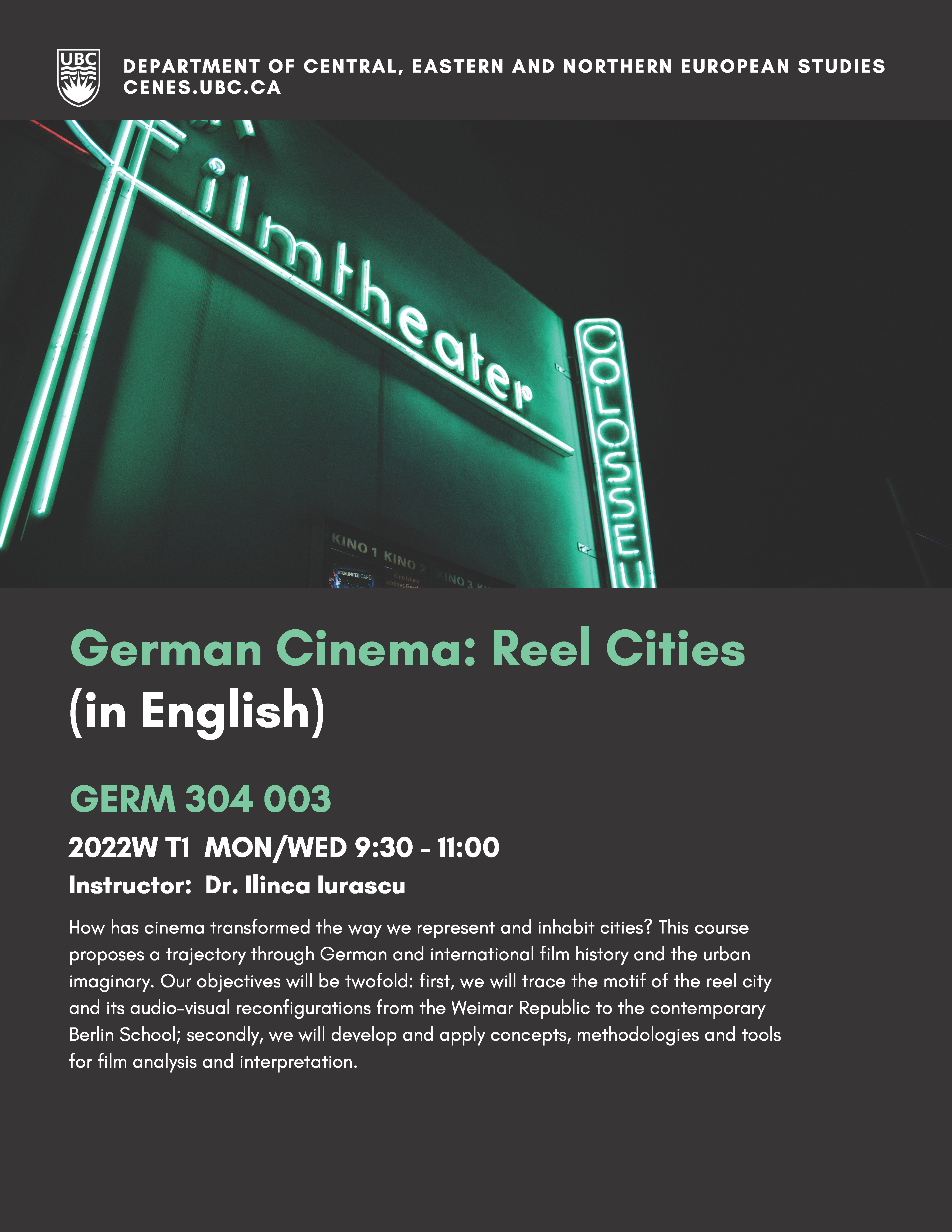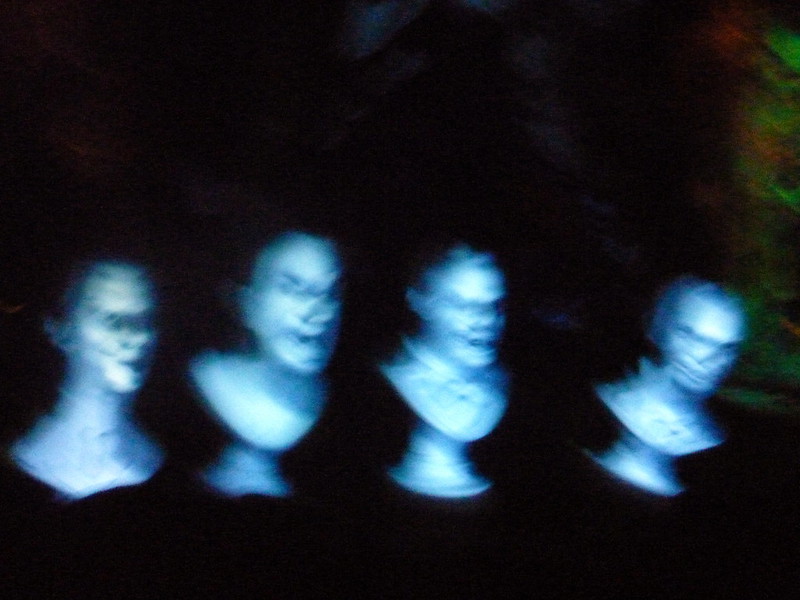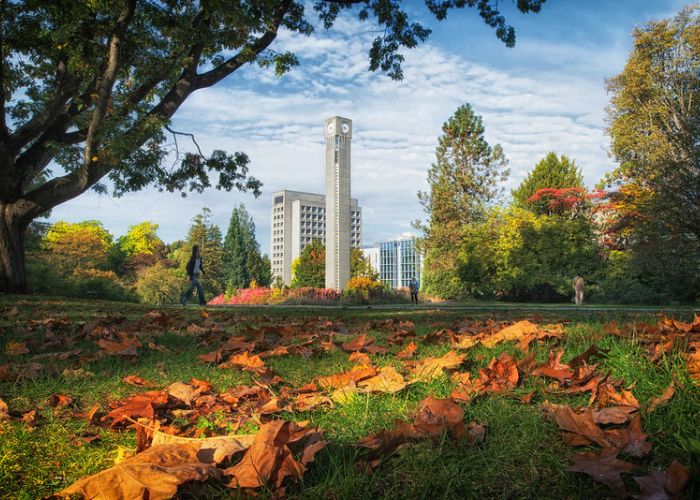The Department of Central, Eastern and Northern European Studies (CENES) is thrilled to host an exciting array of courses in Winter 2022-23. Among these is GERM 304 003: German Cinema (in English), taught by Dr. Ilinca Iuraşcu, a three-credit course that asks the question, “How has cinema transformed the way we represent and inhabit cities?”
CENES: What is the main focus of this course?
Ilinca Iuraşcu: This particular section of GERM 304, entitled “Reel Cities,” examines urban themes across a selection of films from early cinema to contemporary productions. We are essentially looking at negotiations between films and urban spaces: how does cinema create, shape and change notions of the city? How are cities impacted by and impacting film industries? What are possible connections between the urban fantasies of Weimar-era cinema and the expansion of Europe’s oldest large film studio at Babelsberg near Berlin? The focus is mainly, but not exclusively, on the history of German cinema.
CENES: What gave you the idea to design this course?
II: Traces of film work are everywhere in Vancouver, on and beyond the screen, from the moment you pass by a film crew on the UBC campus, or catch a glimpse of the Bloedel Conservatory in a series set in some intergalactic future. Once you realize how deeply connected the histories of entertainment, labour and urban design are, it becomes impossible not to think about further intersections – and that’s precisely what tends to happen in this course. We build on similar observations to speak about historical city-film encounters and learn how to engage with them critically.
CENES: Which students do you think might be particularly interested in this course? What are the particular highlights?
II: The course is designed for all – for students who have never been exposed to German cinema (or, to film studies for that matter), as well as for those who might be familiar with some of the titles on the syllabus. The material and contexts we discuss always lend themselves to new interpretive strategies and collaborative work. For instance, one of the highlights of the course has been the “Mapping Metropolis” exercise, where students bring in their own research perspectives (from history, computer engineering, music, geography and other disciplines) to create new renderings, sketches and models of Fritz Lang’s and Thea von Harbou’s urban dystopia from 1927, paying attention to its tangled temporal and spatial layers and architectures of power.
CENES: Have you recently updated the material, and why?
II: Teaching this course online two years ago brought some matters into deeper focus: questions about private spaces, accessibility, interiority, surveillance, and the “invisibility” of digital labour as integral to the construction of citiscapes and their cinematic imaginaries. We found ourselves returning to these topics, especially during the second part of the course. Who are cities for, which voices and collectives get to represent urban memories and identities on screen and beyond? Counter-intuitively perhaps, we spoke a lot about silences, absences and gaps. This year, I hope we’ll continue to these discussions when we look at treatments of “nature” and “natural spaces,” traditionally regarded as counterpoints to the urban theme, with Ibrahim Shaddad’s Jagdpartie (1964) and Maren Ade’s Toni Erdmann (2016).
CENES: What part of the course do you look forward to most?
Definitely the rush of the first day of classes, and the opportunity to chat with students about what draws them to the subject! Also, there are no requirements for taking “Reel Cities” (no previous knowledge of film history or theory necessary), so jumping forward to the end of the term, it’s thrilling to see how students interpret the material and integrate film-analytical and media-historical approaches into their final projects. And, as in previous years, I also hope we can add a visit to the Cinemateque or the VIFF to the course schedule.



